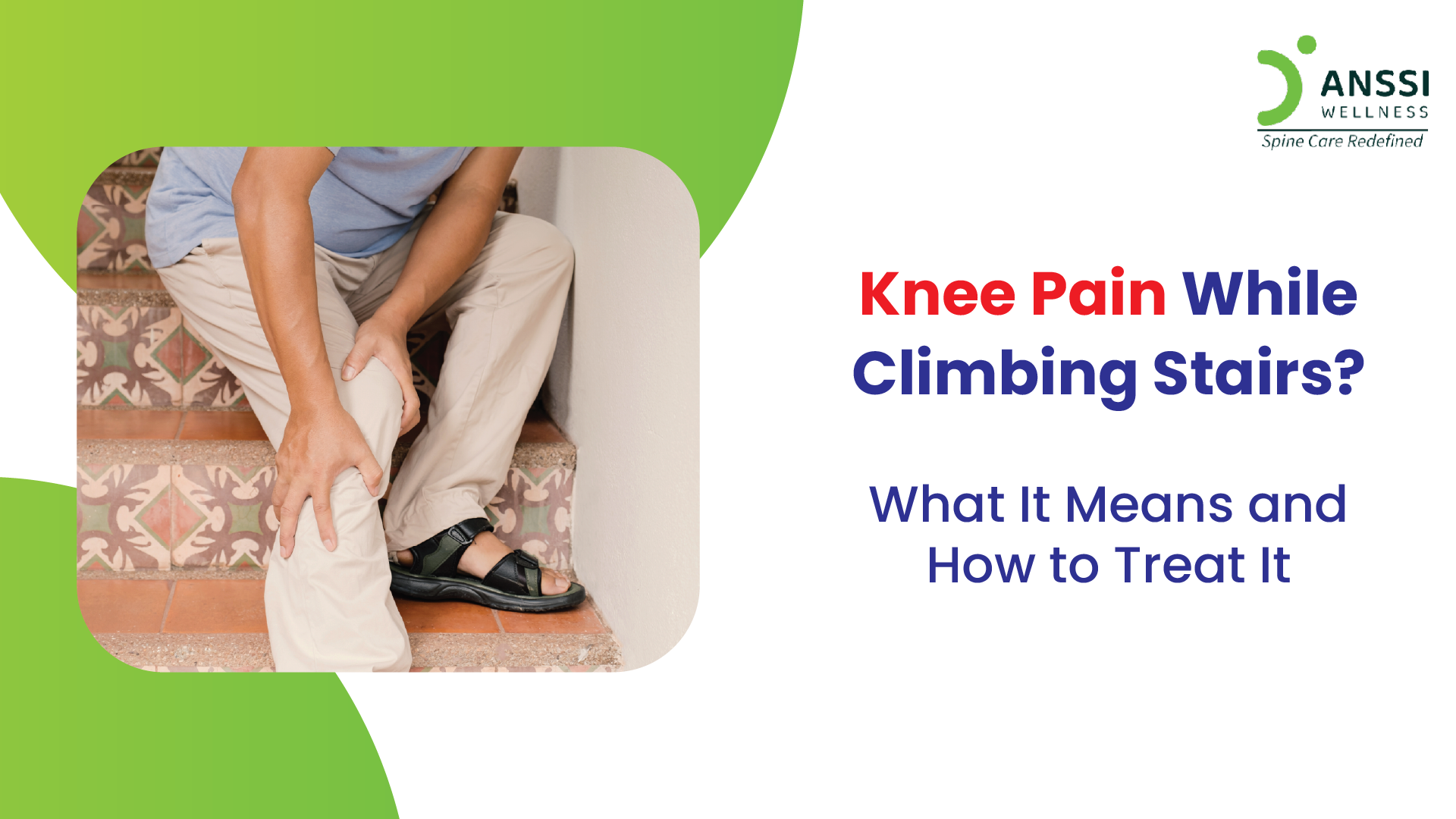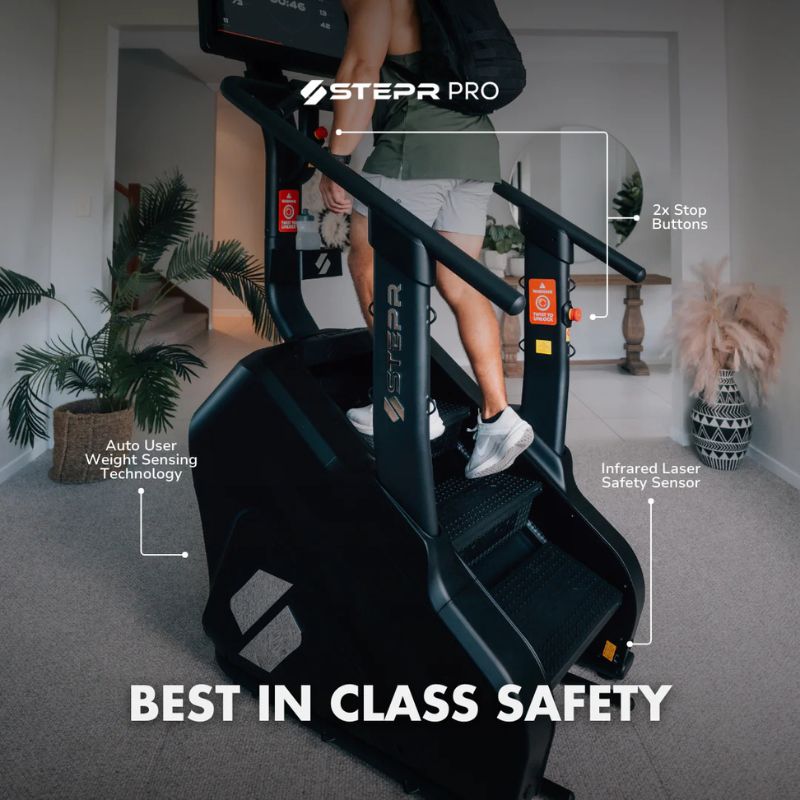Knee pain doesn’t have to end your fitness journey. If climbing real stairs feels like torture, a stair climber for knee pain offers a joint-friendly alternative that actually helps rebuild knee strength while reducing impact by 30-40%. Whether you’re recovering from surgery, managing arthritis, or simply want to stay active without aggravating your knees, the right stair climber can transform pain into progress.
This guide cuts through the marketing noise to show you exactly which features matter for knee pain, how to choose the right type, and what real users with similar conditions experience. You’ll learn to spot machines designed for therapeutic use versus generic fitness equipment, plus get specific recommendations based on your exact knee condition. Skip the trial-and-error process and find your perfect stair climber for knee pain solution today.
Best Stair Climber Types for Bad Knees
Recumbent Step Machines: Seated Relief
Recumbent machines take pressure off your knees by letting you exercise from a seated position. The pedal motion mimics climbing without your full body weight bearing down on sensitive joints. Key features include adjustable seat positioning (16-22 inches high) and back support that prevents forward lean—a common cause of knee strain.
Your body weight transfers to the seat instead of your knees, reducing load by 60-70% compared to standing steppers. The 12-18 inch stride length allows natural motion without overextension, making recumbent models ideal for severe arthritis or early-stage recovery. Look for units with cushioned seats and at least 5 seat adjustment positions to find your perfect alignment.
Standing Stair Steppers: Controlled Vertical Motion
These traditional-looking machines provide the most authentic stair-climbing experience while maintaining control. Independent pedal action prevents one knee from compensating for the other, crucial for injury recovery. Look for models with handlebars positioned 38-52 inches high to maintain proper posture.
Pain prevention tip: Start with 4-inch step height and increase gradually. Models with motion limiters prevent hyperextension beyond 45 degrees—essential for post-surgery users. Standing steppers with magnetic resistance offer smoother motion than hydraulic models, reducing jarring movements that can aggravate knee pain during your stair climber for knee pain routine.
Mini Steppers: Desk-Friendly Therapy
Compact units fit under desks or in small spaces, making consistency easier for daily knee therapy. While limited to 8-10 inch step height, they’re perfect for gentle range-of-motion exercises throughout the day. The 15-18 inch length footprint works in apartments where full-size machines won’t.
Reality check: These lack handlebars, so balance issues may limit usefulness for severe knee instability. Mini steppers work best for mild knee discomfort or as supplementary therapy rather than primary rehabilitation. For optimal results with your stair climber for knee pain regimen, use them for 5-10 minute sessions multiple times daily.
Essential Features for Knee Support
Non-Negotiable Adjustability Points
Your machine must adapt to your knees, not force your knees to adapt to it. Critical adjustments include:
- Pedal angles: 0-15 degrees tilt accommodates different knee conditions
- Step height range: 4-12 inches maximum for severe knee issues
- Handlebar positions: 4-8 height settings prevent forward lean
- Q-factor: 6-8 inches between pedals maintains hip-knee alignment
Without these adjustments, you risk compensating with poor form that could worsen your knee pain. Machines with limited adjustability often cause users to abandon their stair climber for knee pain routines within weeks.
Pain Management Technologies
Modern machines offer features specifically designed for therapeutic use:
- Range of motion limiters: Prevent overextension during flare-ups
- Warm-up programs: 3-5 minute automatic cycles prepare joints
- Pain level input: Machines adjust resistance based on your 1-10 feedback
- Form alerts: Audio warnings when knee alignment drifts
Pro tip: Skip machines without emergency stop cords. When knee pain spikes unexpectedly, immediate cessation prevents further damage. This safety feature is non-negotiable for effective stair climber for knee pain management.
Resistance Systems That Protect Joints

Magnetic vs Hydraulic: Performance Comparison
Magnetic resistance systems provide 16-25 smooth, consistent levels without temperature fluctuations. The silent operation (under 45 dB) won’t disturb household members during early morning therapy sessions. Plus, zero maintenance means one less thing to worry about when pain already dominates your thoughts.
Hydraulic systems offer 8-12 resistance levels at lower cost but require periodic maintenance. Temperature sensitivity means resistance can change mid-workout—a problem if your basement runs cold. For stair climber for knee pain applications, magnetic resistance generally provides more consistent, joint-friendly performance.
Load Progression Without Pain
Start testing with these benchmarks:
- Week 1-2: Level 1-2 resistance, 5-minute sessions
- Week 3-4: Add 1-2 minutes weekly, maintain resistance
- Month 2+: Increase resistance only after 2 weeks pain-free
- Advanced: Never exceed 40 steps/minute to maintain control
Critical warning: Jumping resistance levels too quickly is the #1 cause of setbacks. Your stair climber for knee pain routine should prioritize consistency over intensity—small, daily improvements beat occasional painful sessions.
Real User Experiences by Condition

Post-Surgery Recovery Results
Users 6-8 weeks post-ACL reconstruction report:
– 4.2/5 star average satisfaction
– Significant pain reduction within 2 weeks
– Physical therapist approval ratings high
– Key success factor: Starting at level 1 resistance, 2-3 minute sessions
Expert note: Following orthopedic surgeon guidelines is non-negotiable. Most surgeons require 6-8 weeks minimum before using any stair climber for knee pain after ACL reconstruction.
Arthritis Management Stories
Osteoarthritis patients give these machines 4.5/5 stars:
– “Daily 15-minute sessions replaced NSAID use”
– “Love the low-impact motion on flare-up days”
– “Better than pool therapy during winter months”
– Most successful routine: Level 3-5 resistance, continuous motion focus
Pro tip: For arthritis management, consistency matters more than duration. Three 5-minute sessions daily often works better than one 15-minute session when using a stair climber for knee pain.
Senior User Feedback
Adults 65+ rate stair climbers 4.6/5:
– “Handlebars prevent falls during balance issues”
– “Easy to use while watching TV—consistency improved”
– “Doctor approved over treadmill walking”
– Top features appreciated: Emergency stop, wide pedals, slow speed options
Key insight: Seniors with knee pain benefit most from recumbent models or standing steppers with full handlebar support. The stability features transform what could be risky exercise into safe, therapeutic movement.
Safety Features That Prevent Setbacks

Built-In Protection Systems
Never compromise on these safety elements:
- Motion limiters: Cap knee extension at 45 degrees maximum
- Speed governors: Restrict to 40 steps/minute for therapeutic use
- Low step-on height: 4-6 inches prevents initial knee strain
- Emergency stops: Both cord and button options for immediate halt
Critical warning: Machines without these features may cause more harm than good. Your stair climber for knee pain must prioritize safety over flashy features.
Daily Pain Monitoring Protocol
Track these metrics to prevent overuse:
- Pre-session: Rate knee pain 1-10 (skip if above 4)
- During exercise: Check pain every 5 minutes, stop at 3/10 increase
- Post-session: Reassess pain after 2-24 hours
- Weekly: Track range of motion improvements, not just pain levels
Pro tip: Keep a dedicated journal for your stair climber for knee pain routine. Documenting small improvements builds motivation during challenging recovery periods.
Professional Guidelines Integration
Physical Therapist Protocol
Follow this progression exactly:
- Medical clearance: Required for post-surgical use
- Initial session: 2-5 minutes at level 1 resistance
- Progression rate: Add 1-2 minutes weekly, not daily
- Resistance increases: Only after 2 weeks pain-free
- Form verification: Weekly professional check for first month
Expert note: Many users skip professional guidance and end up worsening their condition. Your stair climber for knee pain routine should always align with physical therapist recommendations.
Orthopedic Surgeon Timelines
Post-surgery machine use requires specific waiting periods:
- ACL reconstruction: 6-8 weeks minimum
- Meniscus repair: 4-6 weeks post-surgery
- Total knee replacement: 8-12 weeks surgeon clearance
- Cartilage procedures: Individual assessment required
Critical warning: Using a stair climber for knee pain too soon after surgery can compromise healing. Always get explicit clearance from your surgeon before starting.
Quick Decision Framework
Choose Recumbent If:
- Balance issues present
- Severe arthritis flares common
- Post-surgery within 3 months
- Need back support during exercise
Choose Standing If:
- Preparing for real-world stair climbing
- Maintaining current fitness level
- No balance concerns
- Want maximum calorie burn
Choose Mini If:
- Space severely limited
- Budget under $200
- Need desk-based movement
- Only gentle range-of-motion needed
Pro tip: When selecting your stair climber for knee pain solution, prioritize your current condition over future goals. A machine perfect for your recovery stage now will serve you better than one designed for where you hope to be.
Final Selection Checklist
Before purchasing any stair climber for knee pain, verify:
- [ ] Minimum 8 resistance levels for progression
- [ ] 250+ lb weight capacity with safety margin
- [ ] 4+ handlebar/adjustment positions
- [ ] 2+ year warranty on parts
- [ ] Emergency stop cord included
- [ ] Step height adjusts 4-12 inches maximum
- [ ] Positive reviews from users with your specific condition
The right stair climber turns knee pain management from a daily struggle into measurable progress. Start with your specific condition—arthritis, post-surgery, or general strengthening—and match features to your recovery stage. Your knees will thank you with every pain-free step.




